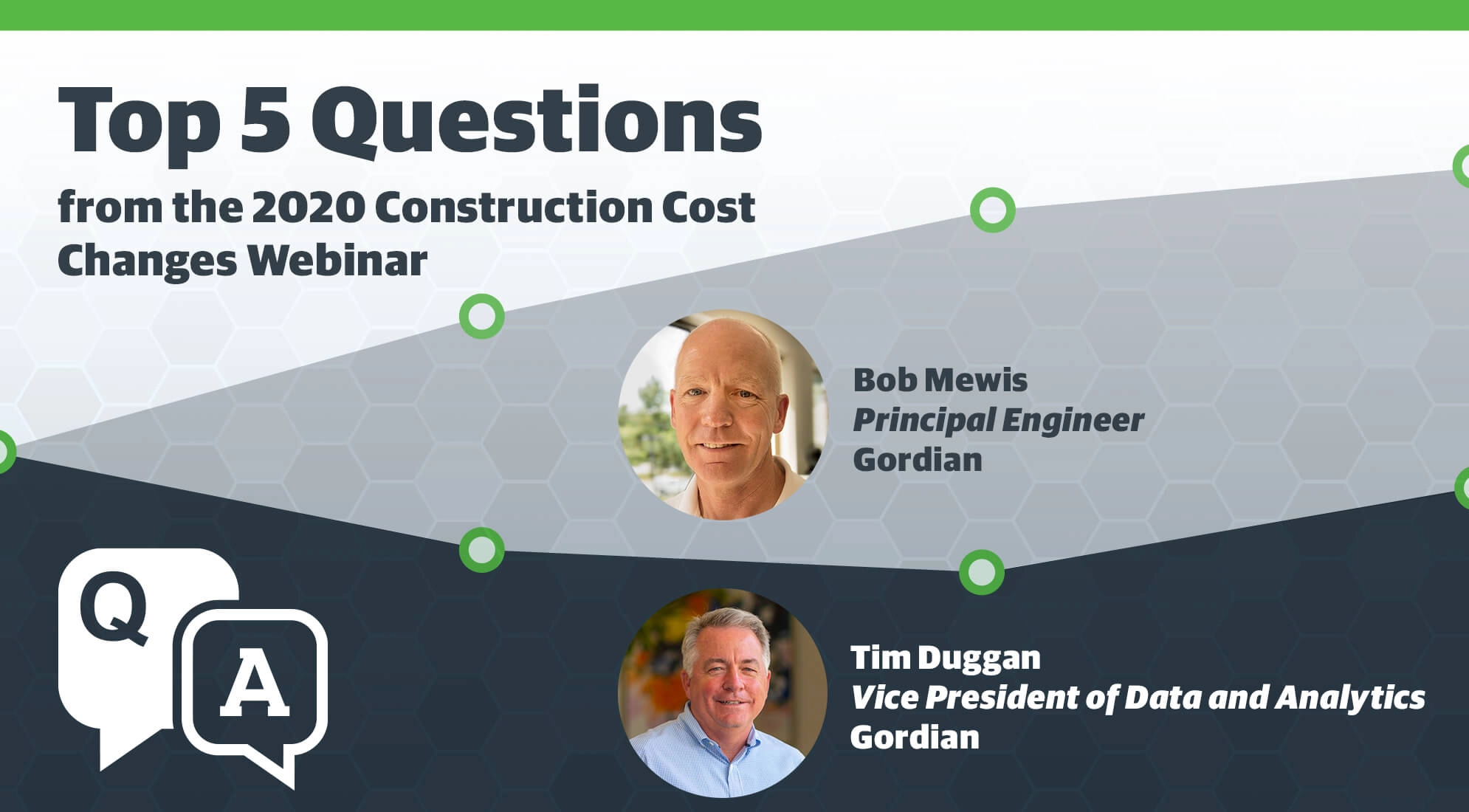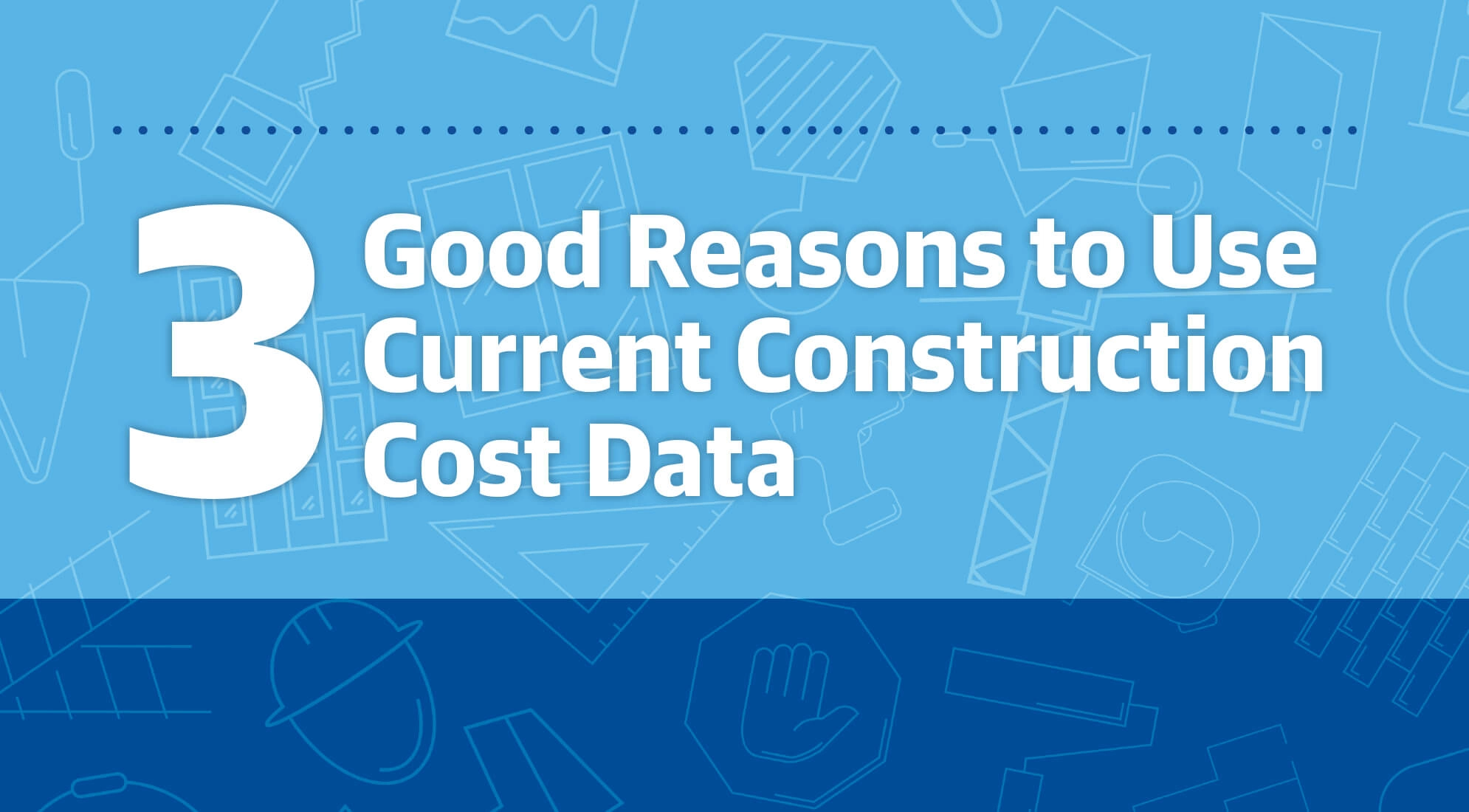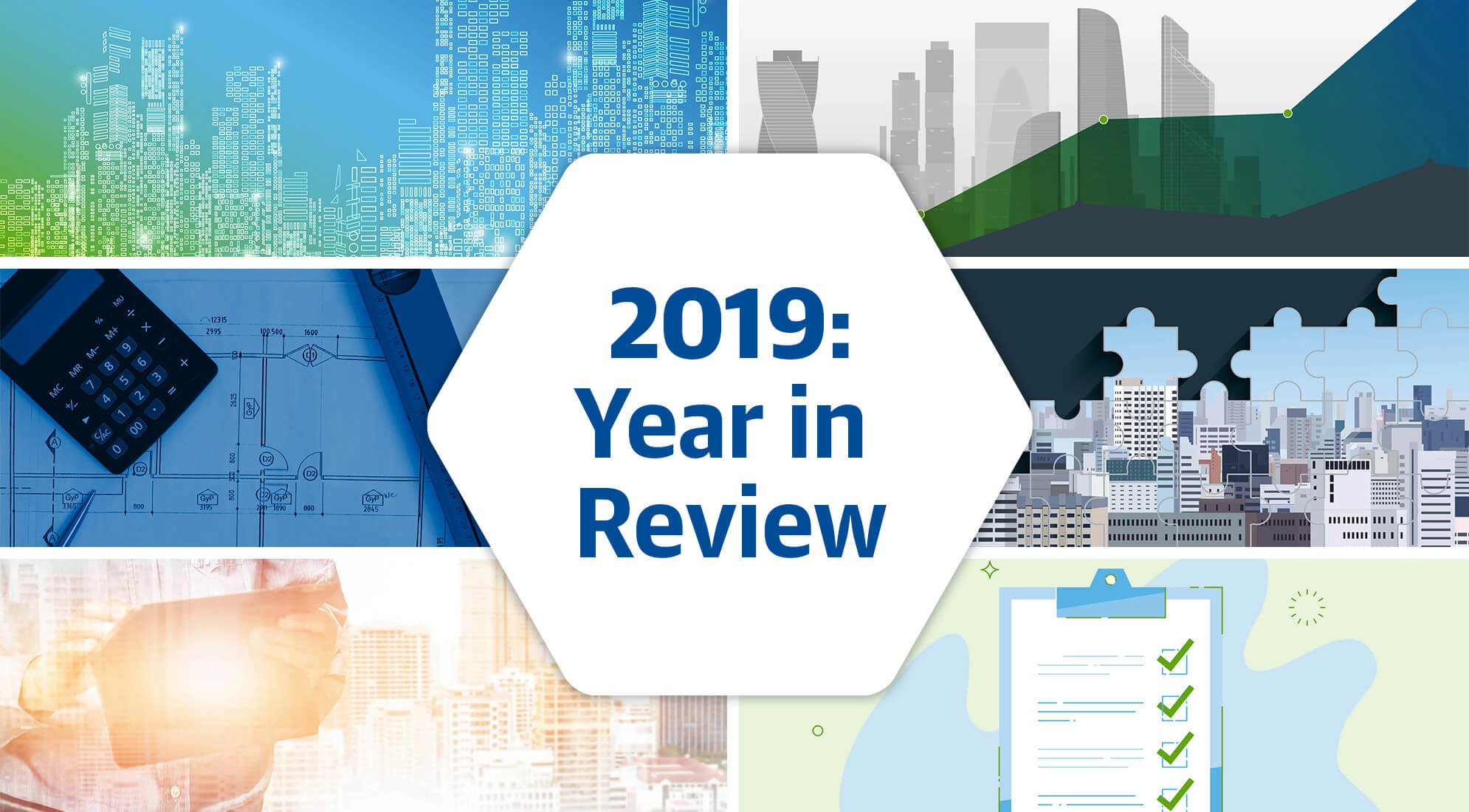After our recent 2020 Construction Cost Changes Webinar, we sat back down with two of our data experts, Principal Engineer Bob Mewis and Vice President of Data and Analytics Tim Duggan, to answer attendees’ questions about RSMeans Data and construction cost changes coming to the industry this year.
Last week we answered five of those questions, and today we’re answering five more! And like we mentioned last week, we highly encourage you to go watch the webinar if you have yet to do so. In addition to providing context to the questions below, the webinar has a lot of other useful and relevant information about changes to our RSMeans Data construction cost database for 2020.
1. How accurate is RSMeans Data?
RSMeans Data is published at a national average price. That being said, each line item in the RSMeans database can be localized to any three-digit zip code in the U.S. or Canada, so the costs you need are accurate to your exact place of business. If you’re using our construction cost books, the localization factors in the back of the book will help you manually calculate the area-specific costs. If you’re using RSMeans Data Online, just set your location in the settings and the program will automatically show costs for your area.
Once you’ve localized your line items, the data will set to a local average. This is important to remember. If you received 10 bids on a project anywhere across the country, we’d expect a bid built with RSMeans Data to check in around number five on that list in terms of total cost – not too expensive, not too cheap. Our goal is not to create the lowest bid for a project. Our goal is to provide a fair cost. We believe this helps preserve both our reputation and yours as reliable members of the construction industry.
2. How does the data-gathering process work for construction cost changes?
Updating the RSMeans database is a lot of work – about 22,000 hours’ worth every year – and it is a complicated process. But here is a basic breakdown of our annual data-gathering method. We start by grouping similar items in our database. We then identify the most commonly-used items in each group and gather real-world prices of those items from six different census regions. This helps us determine national average prices, which we compare to the previous year’s prices. Those rates of price change are subsequently spread across other items in the database that are statistically comparable.
In addition to that, we collect quarterly prices for fixed list of items across 113 U.S. cities. These are the items that receive quarterly updates in RSMeans Data. Gathering their prices across that many locations helps us keep tabs on any regional variations the market might be experiencing.
Hear more about 2020 construction cost changes in this free on demand webinar featuring two of the minds behind RSMeans Data.
3. How does Gordian predict future construction market trends with RSMeans Data?
If you’re unfamiliar with RSMeans predictive data, we have the ability to predict the cost of any line item up to three years in the future within 3% accuracy of the real cost. We do this so our customers can build estimates for future projects without the risk of their estimate being inaccurate by the time they break ground.
Building predictive construction costs starts with analyzing trends in past data. Lucky for us, we have a lot of historical data to look back on. RSMeans Data has been tracking material, labor and equipment costs since the 1940s, and the volume of construction cost data we’ve compiled over time has given us an unrivaled ability to look back at trends in cost changes. Obviously, many of our 92,000+ line items haven’t been around that long. But even when we don’t have long-standing historical data for an exact material or task, we have data on similar materials and tasks that can lend insight into cost projections for new line items.
We then take those historical data trends and compare them to four indexes through a mix of econometric and data-mining methodologies. Those indexes are the Commercial Real Estate Price index, the GPO Logging index, the GPO Paper Products index and the World Gross Domestic Product index. This gives us forecasts for our line items. We then add calculated leads and lags to those forecasts for the next three years to produce our final predictive costs.
4. Can RSMeans Data benefit facility and project owners?
Absolutely! Even though facility owners and managers aren’t performing construction work for their projects, they can still utilize RSMeans Data in a variety of ways. Probably the most common way that facility owners use our data is to estimate the cost of specific repairs. This helps them accurately set repair budgets, which every owner will tell you is imperative for managing a facility well.
Facility owners can also use RSMeans Data Online’s Life Cycle Cost Estimator. The Life Cycle Cost Estimator helps owners forecast maintenance costs and replacement timelines over the life of their asset, so they can be better prepared for the future.
5. Does RSMeans Data contain costs for green and environmentally friendly products?
It does! As construction efforts become more environmentally focused, we’re making sure that green and energy efficient products are available in RSMeans Data. You can find these products by spotting different identifiers in each of RSMeans Data publications.
In our printed cost books, green products and materials are marked with a printed letter “G” next to the line item. RSMeans Data CDs show green products with the last four digits of the line item number shaded green. And RSMeans Data Online displays environmentally friendly items with a leaf icon next to the line item.






